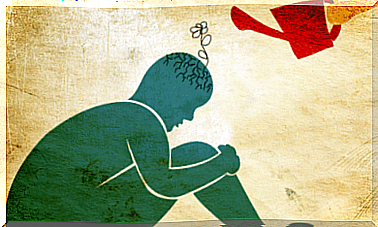Mindfulness Can Relieve Pain, According To This Study

Mindfulness can relieve pain, especially chronic, according to a recent study published in the journal PAIN . Other researchers have also made similar statements. A study published in the journal JAMA stated that mindfulness can specifically help relieve back pain. In some cases, it was even more effective than traditional treatments.
Another study published in Frontiers in Psychology also found that mindfulness meditation helped injured athletes improve their pain tolerance.
Another study showed that it could help people with chronic inflammation, such as rheumatoid arthritis or irritable bowel syndrome. The reason for this may be that mental stress plays a big role under these conditions.
But which parts of our brains are responsible for this analgesic effect? A new study led by Fadel Zeidan, assistant professor of neurobiology and anatomy at Wake Forest Baptist Medical Center in Winston-Salem, North Carolina, is trying to figure this out.
Mindfulness and pain
Zeidan says that mindfulness can relieve pain as it is about being aware of the present, without having emotional reactions or judging. Some people are better at this than others and they seem to feel less pain.

What the researchers wanted to find out was whether a disposition for mindfulness was linked to lower pain sensitivity, and which brain functions played a role, if so.
They studied 76 people who had never meditated before. They assessed participants’ mindfulness levels using the Freiburg Mindfulness Inventory test. This test measures non-identification of thoughts with emotions, acceptance, openness, non-reactivity, understanding of mental processes and observation of the present.
The researchers then used painful and non-painful heat levels to stimulate participants’ brains. They used magnetic resonance imaging (MRI) to observe their brain activity.
They worked with the assumption that inherent mindfulness correlated with lower pain sensitivity and lower activity in a brain circuit called the standard mode network (DMN).
There are several contiguous parts of the brain in this network, all of which are active during rest periods. Rest periods are when you have no attention to the outside world and are lost in your thoughts. Important brain areas in the network include the posterior parietal cortex, the prefrontal medial cortex, and the angular gyrus.
Meditation and ‘default mode network’
Meditation is an mindfulness exercise that focuses on your immediate experience. When you meditate, you push distractions like self-reflective wandering thoughts away.
Not surprisingly, researchers have associated meditation with lower activity in areas of the brain that are involved in the treatment of self-reflective thoughts. These areas form the default mode network. Those who are experienced in meditation also show much lower activity than those who are not.
Along these lines, they have also associated migrating tanks with higher DMN activity. Those who show a lower DMN activity while meditating also have a better ability to concentrate. Early research has suggested that meditation lowers DMN.

But how is it related that mindfulness can relieve pain?
This new study showed that inherent mindfulness was associated with lower activity levels in the posterior cingulate cortex. Conversely, those who reported the highest levels of pain showed higher activity levels in this region. Zeidan says DMN turns off when we do things like read or write.
He also says that it returns when we stop these tasks and return to the treatment of thoughts and feelings.
“The results of our study showed that individuals who practice mindfulness appear to be less trapped in the experience of pain, which was associated with lower pain reports,” Zeidan said. He also said that: “Now we have a new ammunition to target this area of the brain in the development of effective pain treatments”.
He hopes that their mindfulness study will ultimately help people relieve chronic pain: “Based on our previous research, we know that we can increase mindfulness through relatively short periods of mindfulness meditation training so that it can prove to be an effective way to provide pain relief to millions of people suffering from chronic pain ”.









